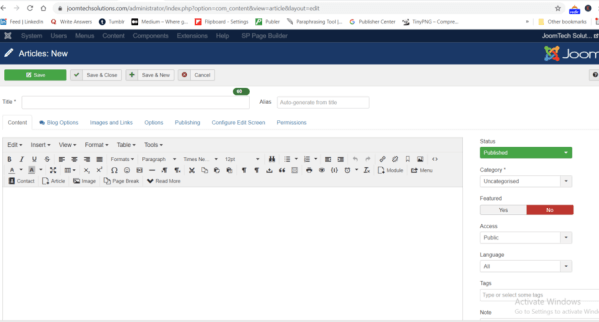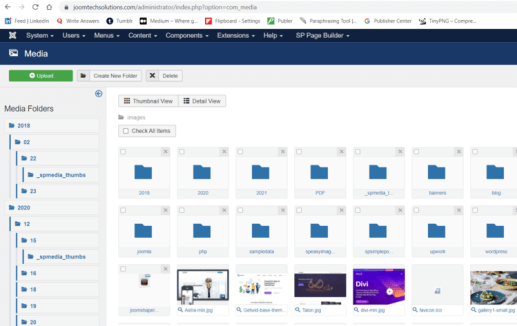A Content Management System (CMS) is a system that provides a backend platform where users insert data into a database and display it on the front-end interface. So in this post, we will explain What is Content Management systems in detail.
What is CMS?
A content management system (CMS) is software that allows users to generate, maintain, and alter content on a website without requiring specialist technical skills.
In simpler terms, a content management system is a platform that allows you to create a website without having to write all of the code from start (or even know how to code at all).
Rather than designing your own system for creating web pages, storing images, and other activities, the content management system handles that entire fundamental infrastructure for you, allowing you to focus on more forward-facing aspects of your website.
Aside from websites, content management systems can also be used for other purposes, such as document management.
Content Management Systems (CMS): How Do They Perform?
We’ll take a quick tour of the Joomla UI to show you how a content management system works (Joomla is a good example of a content management system).
Let’s begin by developing some material. You’d have to build a static HTML file and submit it to your server if you didn’t have a content management system (sounds complicated, right?).
You may simply write your material in an interface that appears similar to Microsoft Word when using a content management system like Joomla:

What does a CMS do?
Similarly, to upload and manage media, such as photographs, you may just browse the media library rather than interacting directly with your web server:
It’s not only a backend management interface, either. It also ensures that all of the material you write appears precisely as you want it to on your website.

What is CMS online?
On a more technical level, a content management system is comprised of two major components:
- A content management application (CMA) – is the component that allows you to add and manage content on your website (like you saw above).
- A content delivery application (CDA) – is the backend, a behind-the-scenes procedure that takes the content you enter into the CMA, appropriately stores it, and makes it available to your visitors.
The two platforms work together to make it simple to maintain your website.
What is an example of a CMS?
The best example of a popular content management system is Joomla, which we showed you before. While there are other content management systems available, WordPress, for example, has a market share of over 40.0 per cent on websites that use a known content management system.
It’s important to note that we’re not referring to WordPress.com when we say “WordPress.” Instead, we’re concentrating on WordPress.org, the official home of the open-source WordPress content management system.
It’s important to note that we’re not talking to WordPress.com when we say “WordPress.” Instead, we’re emphasizing WordPress.org, the official home of the open-source WordPress content management system.
Other popular content management systems, in addition to the self-hosted WordPress software, include:
- Joomla
- Drupal
- Magento
- PrestaShop
- Squarespace
- TYPO3
- Wix
What are CMS and its purpose?
Nowadays, most content management systems are quite adaptable. While some, like Magento and eCommerce, are focused on specific usage, the majority of popular content management systems may be used to develop almost any form of a website.
You can, for example, utilize WordPress to power:
- Blogs
- Forums
- eCommerce stores
- Static websites
- Static websites
- Social networks
- Online courses
- Membership sites
- Portfolios
How do I choose the best CMS?
This depends on your need, if you want a blog website and you should choose one and only one WordPress that is built for blogging. While you can choose a secondary option in Joomla which is also the best CMS after WordPress.
And if you want a Portal website or eCommerce and want a perfect admin panel then you should prefer Joomla.
If you want only eCommerce-based websites then you should choose Magento.
So this depends on the requirements-based process.
Sure, everyone has an opinion, but it’s tough to make a convincing case for one content management.
However, we can go back to the figures and claim that there’s a reason WordPress has such a large part of the content management system market.
It is the most user-friendly and adaptable solution for most types of websites. It isn’t always the greatest decision, but it is usually the best option.
View our posts on: for a more in-depth comparison of some of the most popular content management systems.

